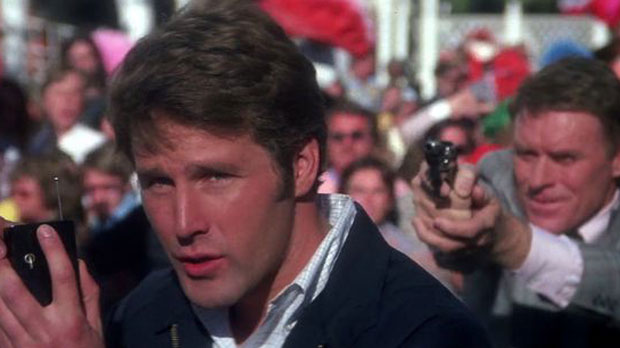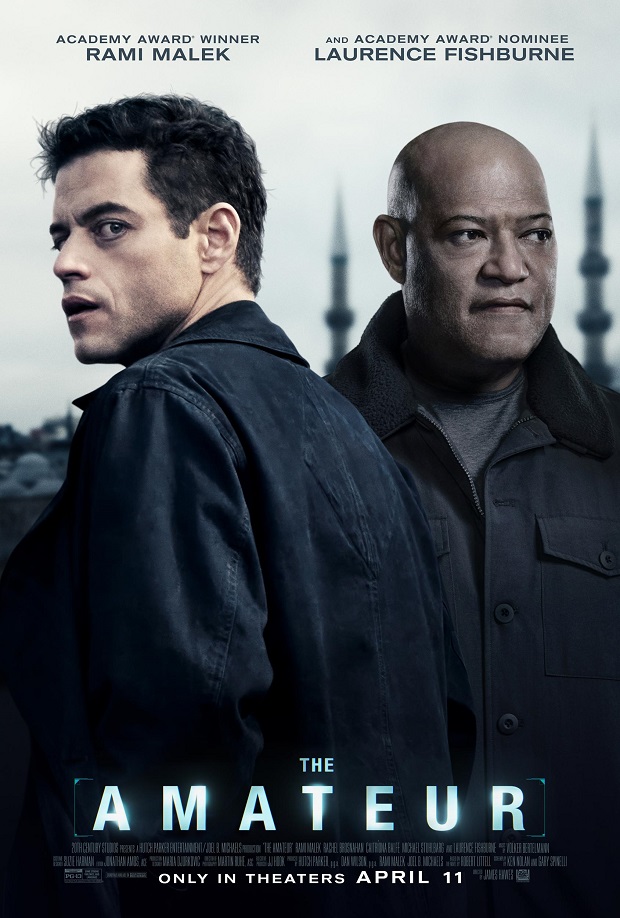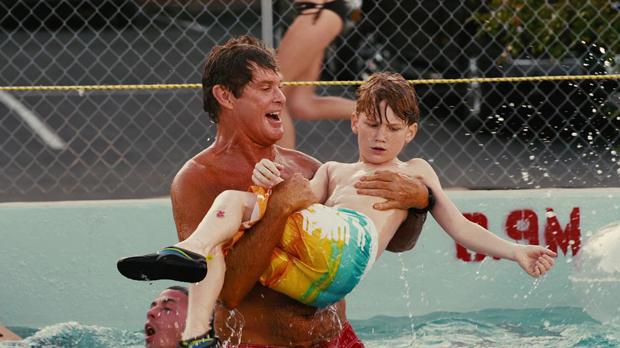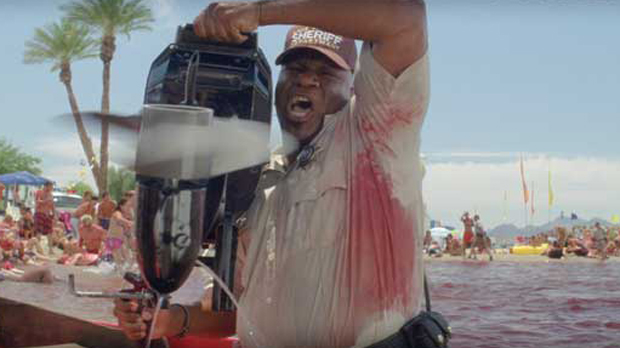 Rollercoaster (1977) Universal/Action-Thriller RT: 119 minutes Rated PG (language, violence) Director: James Goldstone Screenplay: Richard Levinson and William Link Music: Lalo Schifrin Cinematography: David M. Walsh Release date: June 10, 1977 (US) Cast: George Segal, Richard Widmark, Timothy Bottoms, Henry Fonda, Harry Guardino, Susan Strasberg, Helen Hunt, Dorothy Tristan. Box Office: N/A
Rollercoaster (1977) Universal/Action-Thriller RT: 119 minutes Rated PG (language, violence) Director: James Goldstone Screenplay: Richard Levinson and William Link Music: Lalo Schifrin Cinematography: David M. Walsh Release date: June 10, 1977 (US) Cast: George Segal, Richard Widmark, Timothy Bottoms, Henry Fonda, Harry Guardino, Susan Strasberg, Helen Hunt, Dorothy Tristan. Box Office: N/A
Rating: ** ½
Rollercoaster isn’t exactly a disaster movie nor is it a routine good guy-bad guy suspense-thriller. It’s a little bit of both yet doesn’t wholly succeed as either one. This is a roundabout way of saying I don’t know exactly what to make of it.
The plot is simplicity itself, FBI agents and a ride inspector work together to stop a psychotic mad bomber that’s been attacking amusement parks around the country. I’m not exaggerating when I say this synopsis basically summarizes the entire movie. Granted, movies have been built on flimsier premises, but this one leaves the viewer wanting more. It’s a great story idea, but very little is done with it. Yet somehow director James Goldstone (When Time Ran Out) still manages to stretch it out to just under two hours, a lot of which is filler. We get unnecessary scenes of the hero at home and prolonged conversations about dealing with the central threat. The movie’s pacing suffers because of this. Rollercoaster would have benefited from tighter writing and directing. However, it’s still a reasonably entertaining movie.
The villain in Rollercoaster is never referred to by name; he’s known only as “Young Man” and is played by Timothy Bottoms (The Last Picture Show). We know nothing about him except that he served in Vietnam and is an expert on bombs and electronics. The movie opens with Young Man detonating a bomb on the tracks of a rollercoaster. It results in a catastrophe that claims the lives of several riders. He sets a fire at another amusement park across the country. It’s all part of a scheme to extort $1 million from the heads of five major parks.
This is what ride inspector Harry Calder (Segal, Fun with Dick and Jane) finds out when he starts looking into the matter. He’s also the one that Young Man selects to deliver the money to him. Under the supervision of FBI Agent Hoyt (Widmark, Kiss of Death), Harry is made to run all over Kings Dominion Park (Richmond, Virginia), going on various rides until the bad guy is satisfied that the hand-off will go undetected.
Naturally, the FBI tries to pull a fast one and Young Man calls them on it. By way of retaliation, he tells Calder there will be another attack. He correctly deduces the latest target will be The Revolution (at Magic Mountain), scheduled to open July 4 meaning it will be a major media event and attract thousands of customers/potential victims. Will he be able to figure out the identity of the mad bomber in time to stop him?
Rollercoaster is a bumpy ride, but not without a few scattered thrills. The first bombing is pretty cool. If that doesn’t make you avoid rollercoasters for the rest of your life, I don’t know what will. Although initially suspenseful, the sequence with Segal being sent all over the park is overlong. It becomes redundant and self-defeating. Goldstone and the writers attempt to add personal drama to the proceedings with facets of Calder’s home life: his relationships with his girlfriend (Strasberg, The Manitou) and teenage daughter (a very young Helen Hunt) and his attempts to quit smoking. This is the filler I was talking about earlier. None of it really serves the plot other than to have the two girls at Magic Mountain at the same time as the bomber. That they’re not taken hostage by Young Man is a sign of either originality or laziness.
Now let’s talk about the lack of character development as it pertains to the villain. There is none. We know he’s deranged. We assume that it has something to do with his fighting in Vietnam (aren’t all Vietnam vets in the movies crazy?). We have no idea why he wants the money. Is he broke? Does he feel it’s owed to him by an ungrateful country and unfair system? One can make the same observation about the sniper in Two-Minute Warning, but there’s a difference. The bad guy in the 1976 movie basically remains faceless and voiceless until the climax. Here he’s introduced as a major character with dialogue. We need more information than what we’re given.
As the hero, Segal does okay, nothing particularly noteworthy about his performance. Henry Fonda makes a customary brief appearance as Segal’s boss. He can do this kind of role in his sleep; he built the latter part of career on such roles. Widmark does well as the FBI agent who barely tolerates Segal’s character. It’s a great cast that’s borderline wasted here.
When released theatrically, Rollercoaster was shown in Sensurround which means the theater was equipped with devices that caused the seats to vibrate during the rollercoaster scenes allowing the audience to experience the feeling of being on the ride. Only three other films utilized this gimmick: Earthquake (1974), Midway (1976) and the theatrical version of Battlestar Galactica (1979). Obviously, it didn’t prove popular with the moviegoing public. I don’t know how much it enhanced the experience of watching Rollercoaster. What I do know is that the producers probably felt that the gimmick would compensate for the movie’s shortcomings so they didn’t concern themselves too much with things like narrative, pacing or character and plot development. It’s not a bad picture per se, just a comparatively weak one. It’s kind of fun, but far from the ultimate thrill ride it promises.




